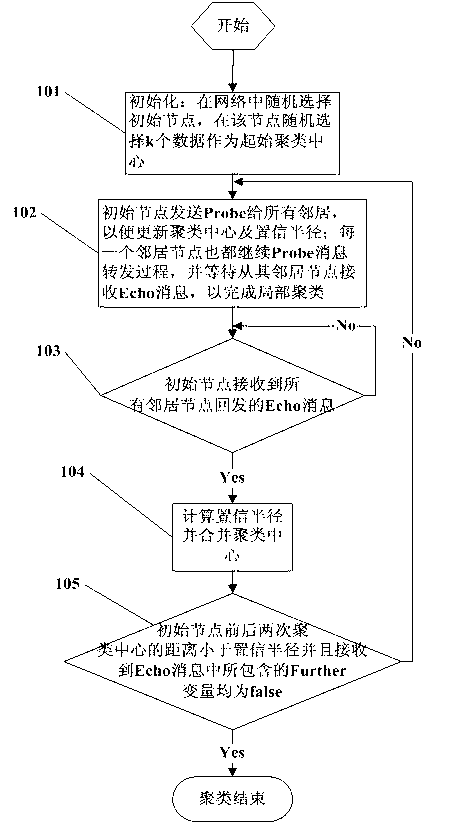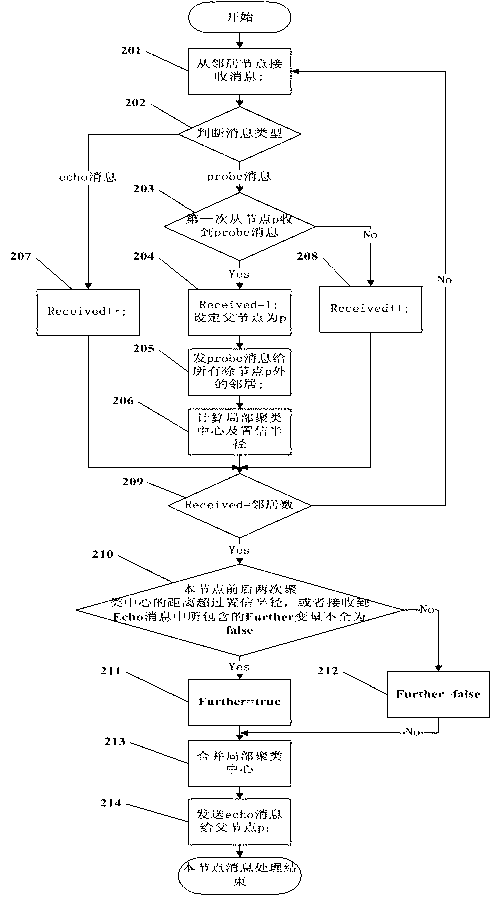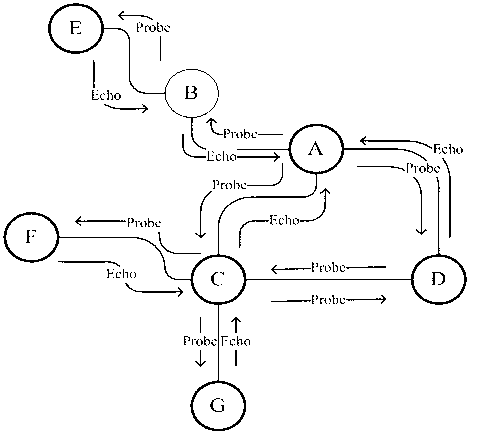Distributed clustering method of P2P (peer-to-peer) network based on believable radius of nodes
A technology of distributed clustering and P2P network, which is applied in the field of network) distributed clustering, which can solve the problems of large bandwidth consumption, high network bandwidth usage, and no consideration of data distribution and locality, so as to save bandwidth and ensure Clustering effect, effect of improving application level
- Summary
- Abstract
- Description
- Claims
- Application Information
AI Technical Summary
Problems solved by technology
Method used
Image
Examples
Embodiment
[0087] Take 60,000 data from 3 types of 2-dimensional Gaussian mixture distributions as data objects. The mean values of the Gaussian distributions used are: (0, 0), (6, 2), (8, 8), and the covariance matrices are all Two-dimensional identity matrix, set 500 network nodes at the same time, distribute 60,000 data objects to 500 network nodes equally, and set the k value of clustering to 3.
[0088] Figure 4 Describes the distribution map of 60,000 data used as data clustering objects. Among them, different colors and shapes represent data with different Gaussian distributions, diamonds, stars, and triangles represent Gaussian distribution data with mean values at (0, 0), (6, 2), (8, 8), and the covariance matrix is two Three types of data of the dimensional identity matrix.
[0089] Apply the above data to 500 network nodes and run the DFEKM method and the method of the present invention for 50 times. The results obtained are as follows Figure 5 with Image 6 As shown, the ...
PUM
 Login to View More
Login to View More Abstract
Description
Claims
Application Information
 Login to View More
Login to View More - R&D
- Intellectual Property
- Life Sciences
- Materials
- Tech Scout
- Unparalleled Data Quality
- Higher Quality Content
- 60% Fewer Hallucinations
Browse by: Latest US Patents, China's latest patents, Technical Efficacy Thesaurus, Application Domain, Technology Topic, Popular Technical Reports.
© 2025 PatSnap. All rights reserved.Legal|Privacy policy|Modern Slavery Act Transparency Statement|Sitemap|About US| Contact US: help@patsnap.com



